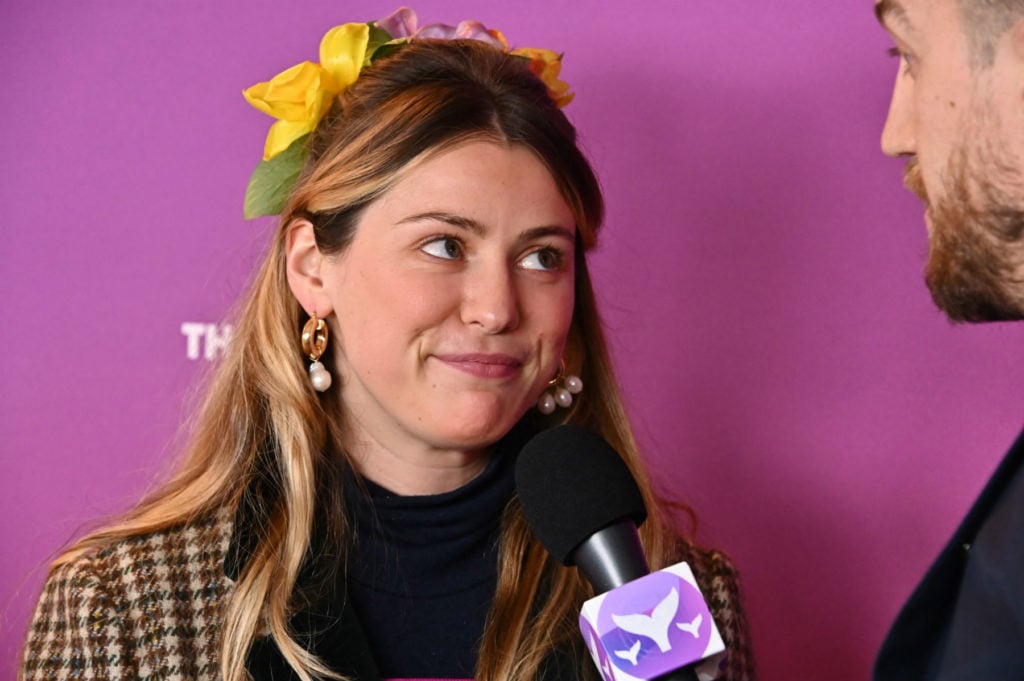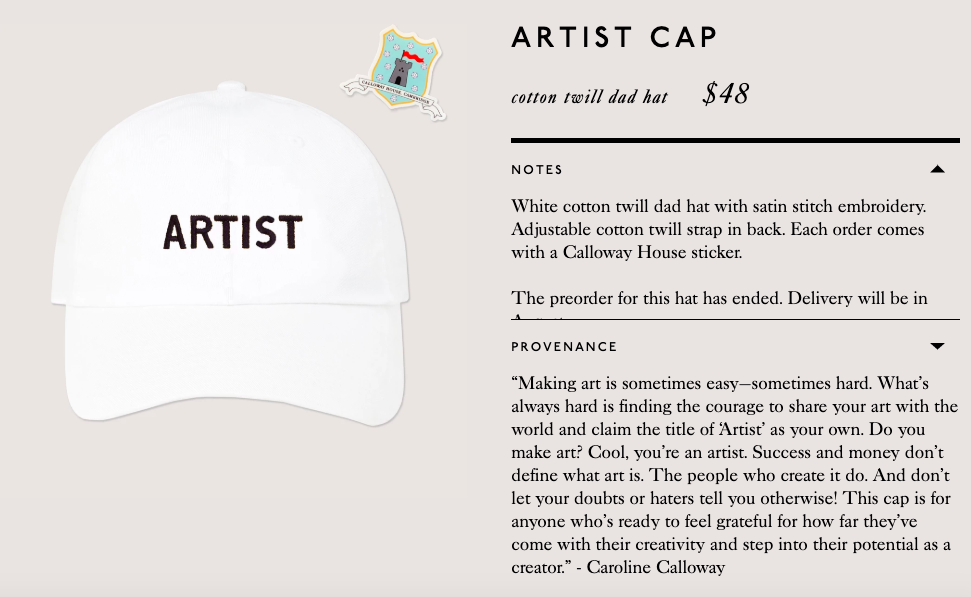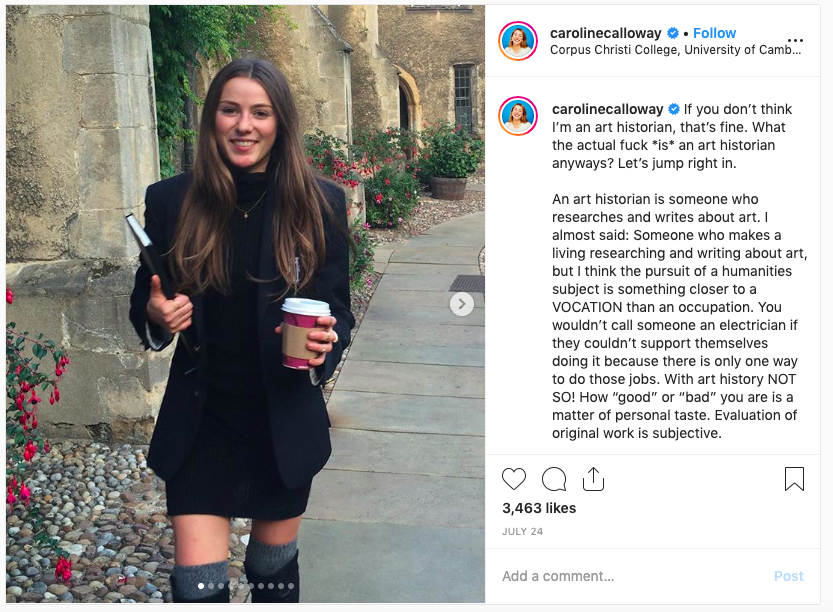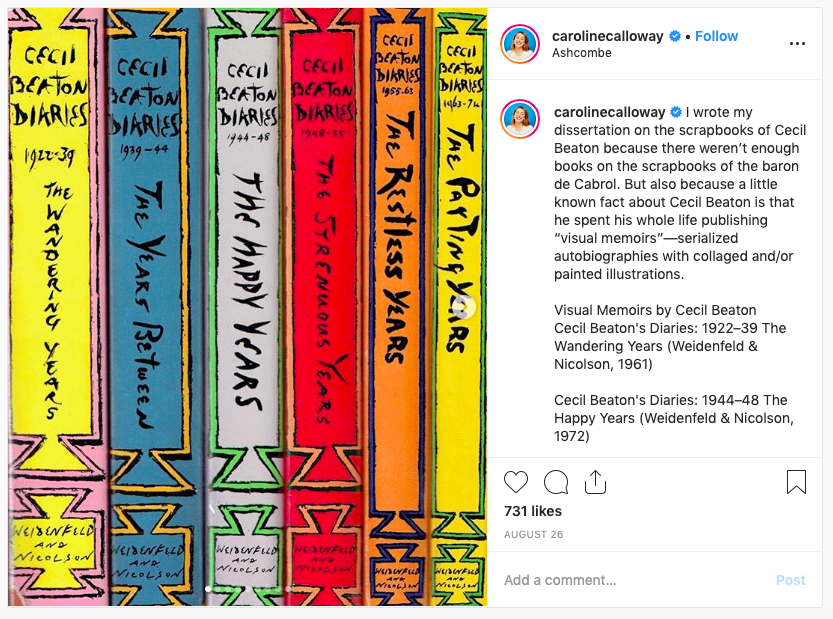Opinion
Why Is Everyone Obsessed With Instagram Star and ‘Art Historian’ Caroline Calloway? Her Art Writing Actually Offers Some Insight
Calloway's writing on Cecil Beaton and Salvador Dali offers a glimpse into the Instagramification of art.

Calloway's writing on Cecil Beaton and Salvador Dali offers a glimpse into the Instagramification of art.

Ben Davis

In Richard Seymour’s new book on social media, The Twittering Machine, he makes the point that Instagram took off in the immediate aftermath of the Great Recession. This fact, he hypothesizes, has shaped the culture that has taken root in it, as the fantasies of affluence and leisure, accessible creativity and social influence that it trades in gained traction as compensatory fantasies for a downwardly mobile generation.
That’s why, I suppose, the relatively minor revelations about Instagram influencer Caroline Calloway have eaten up so gleefully much media bandwidth these last few days. A viral story on the Cut by Calloway’s former friend and one-time Instagram ghostwriter, Natalie Beach, has been followed by a tidal wave of explainers, think pieces, an “Are You a Caroline or Are You a Natalie?” Buzzfeed quiz, a New York Times follow-up interview with Beach, and an NBC news follow-up with Caroline.
That’s a lot of attention for an influencer with a few hundred thousand (purportedly) “young, literary, edgy” Instagram followers. It seems her content has entered people’s lives at the lower, relatable end of the “Rich Kids of Instagram” world. Consequently, her fall from fairytale to cautionary tale specifically taps into a very-contemporary sense that the reality behind the Instagram dream world was always lowered expectations and a lot of delusional self-exploitation anyway.
The Natalie Beach piece in the Cut is a memoir version of “Instagram vs. Real Life,” giving insight into the tawdry but pretty ordinary details behind Calloway’s rise and fall: a combination of preposterous outward self-confidence and lack of inner self-confidence that led her to lean on her friend to co-author the signature prolix captions to her Instagram; an Adderall addiction and mental health problems; callousness toward her less affluent and more vulnerable friend; buying Instagram followers. Vice had already reported that she struggled to pay the rent on her very Instagram-able apartment; yesterday, she announced on Instagram that her father died—which she took to NBC to talk about, and has continued to turn into Instagram material in posts. Which either turns your schadenfreude to sympathy, or adds to your sense that something is deeply, deeply wrong with this culture.
Art—or a certain Instagram-filtered conception of it—does play a particular role in this story. Calloway’s Insta bio currently identifies her as: “Writer, Art Historian, Painter, Cool ?????.” Her very first Instagram photo is from the Metropolitan Museum, where she had an internship in the publicity and merchandising department. She became Instagram famous for her photos of life as an American student of art history at Cambridge University, painting it with romantic colors, gathering a following she parlayed into a miraculous book contract.
She then became social-media infamous for spectacularly failing to deliver the book, and making a botched bid to reinvent herself as a creativity guru, teaching fans the secrets of “living your best life” through Instagram storytelling and flower crowns. She was brutally pilloried as a “scammer” for (among other things) selling $165 tickets to her workshops, then cancelling almost all of them, having never actually booked venues.
In the months since the internet went into a furor over Calloway’s bungled tour, she has tried her hand at selling art directly to her fans, creating Matisse-inspired cut-outs and a line of “tittay paintings”—canvases featuring colored backgrounds in a swirly, tie-dyed style, with a pair of cartoon breasts then drawn in black on top. It’s meme art, designed to be funny and iterated in bulk. For the superfans, she previously tried her hand at merchandise, including shirts with a HOUSE CALLOWAY crest inspired by Cambridge and ball caps emblazoned with “SELF-OBSESSED MESS” (to be worn ironically) or “ARTIST” (to be worn sincerely).

Screenshot of Caroline Calloway-designed “dad hat” sold through Rowing Blazers.
Unlike Calloway’s more blood-thirsty critics, Beach denies that her former friend can be described simply as “Anna Delvey with an art-history degree.” That is, in Beach’s construction, Calloway’s not just a “scammer,” but actually the victim of how her own real belief in what she is doing led her to steamroll over reality (including her own). Beach describes the two as being drawn to writing on Instagram because they believed that they were creating the future of literature.
As for art, here’s Calloway’s Instagram post, from this July, on what being an “art historian” means to her:

Screenshot of Caroline Calloway’s Instagram post about art history.
In the full caption (well worth reading if you click through to the full post) Calloway
The combination of the proudly crass and the wildly sincere is just fascinating.
In the same post, she mentions that she wrote a paper on British fashion photographer Cecil Beaton, “Artworks or Preliminaries? An Evaluation of Cecil Beaton’s Scrapbooks,” one page of which she posts.
It is all about Beaton as a character, not as an artist: “That Beaton displayed a propensity towards drama in his real world interactions is supported by Beaton himself as well as those who knew him,” Calloway writes. She goes on to quote an observer that Beaton “made a career of playing make-believe.” She homes in on “his yearning to always display the most thrilling and attractive version of himself.”
Calloway’s argument then seemingly goes on to look at Beaton’s practice of scrapbooking “visual memoirs” as a way that he created a theatrical self-presentation of his world—making, it seems, a kind of intellectual case for her own theatrical construction of herself via Instagram feed as art.

Screenshot about Caroline Calloway’s research into Cecil Beaton’s scrapbooks.
Calloway also mentions writing an essay for a “chic gallery.” That is easily discoverable. It is “Salvador Dalí: A Love Story,” an online essay that accompanied ACA Galleries show of Dalí works from the Pierre Argillet collection earlier this year (when Calloway was, in fact, in the thick of very publicly being raked over the coals for her failed creativity workshops).
The essay is not actually bad, though what purpose it serves the show is a bit confounding. It doesn’t really seem to value the Surrealist’s paintings at all (let alone the etchings and tapestries in the show). Similar to that snippet about Beaton, she introduces Dalí’s importance through his legend as a celebrity and a character, then explains:
Dalí even experienced such fame during his own lifetime that he often treated large groups of friends to dinner by settling the check with a drawing on the reverse—knowing that even a small doodle by his hand would likely prevent the check from ever being cashed.
This degree of fame was not accidental. Dalí was arguably the first modern artist to cultivate a personal brand in any contemporary sense and his talent for doing so proved remarkably skillful. Dalí displayed a natural knack for courting controversy and intrigue. He once duped Yoko Ono into buying a single strand of his moustache for $10,000 dollars that was, in fact, a dried blade of grass from a nearby park. It was anecdotes like this which endeared him to the fashionable set of Café Society in Europe in the 1950s.
Her big point about Dalí’s Surrealism is that he was able to spin the gold of artistic celebrity into getting away with not having to pay for anything!
This is, it might be worth adding, a very strange read on art history. Artistically, Dalí’s creative heyday was before this time, mainly before he was expelled from the Surrealist movement in 1939. “Having proclaimed himself a genius while in his 20’s, Salvador Dalí went on to promote this notion with such relentless conviction that the egotist eventually overshadowed the artist,” Alan Riding once wrote of late-period Dalí. “By the time he died in 1989, leaving hundreds of signed sheets of paper to spawn a fake Dalí industry, many in the art world had turned against him.”
It’s as if the ideal of Instagram art based in “making a career of playing make-believe” that Calloway has discovered—or that she is a symptom of, really—allows you to cut straight to being the late, dysfunctional, celebrity-spectacle Dalí without having to pass through the burdensome achievement of painting the Persistence of Memory.
There’s a detail reported in one of the accounts of Calloway’s creativity workshops, the ones where she promised to teach the “secret of flower crowns.” At the end, she is said to have whispered in the ear of attendees: “The secret to flower crowns is there is no secret.”
That is, of course, very funny—but it’s also actually an honest, if unintentional, thesis about a kind of present-day aesthetic philosophy. And clearly it is also a kind of curse too.